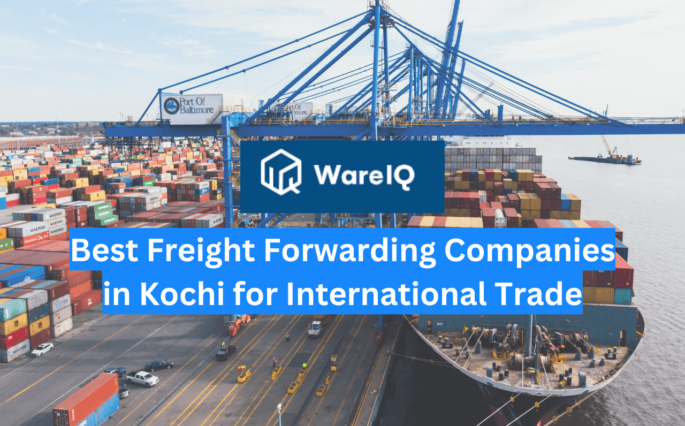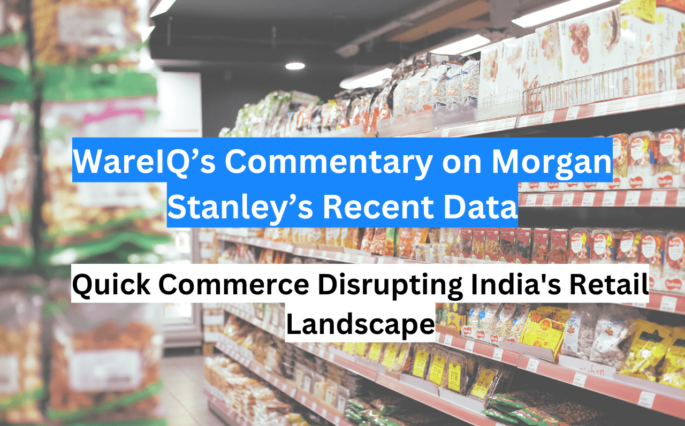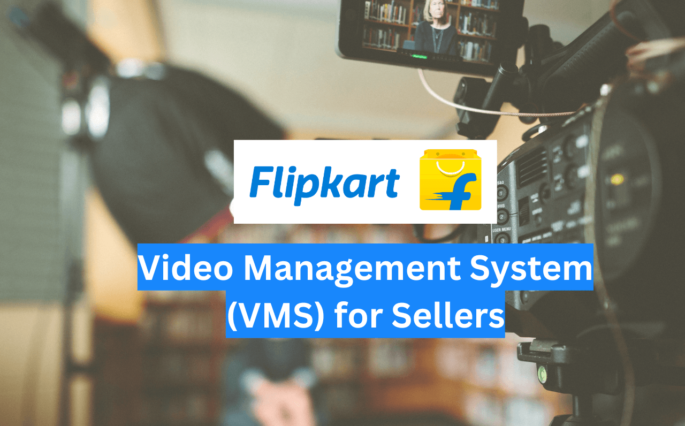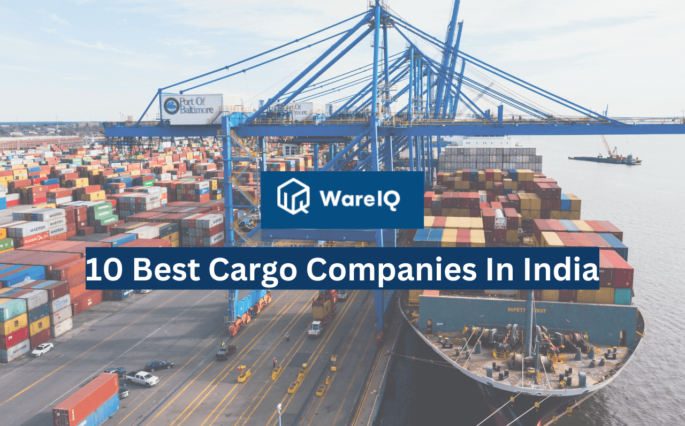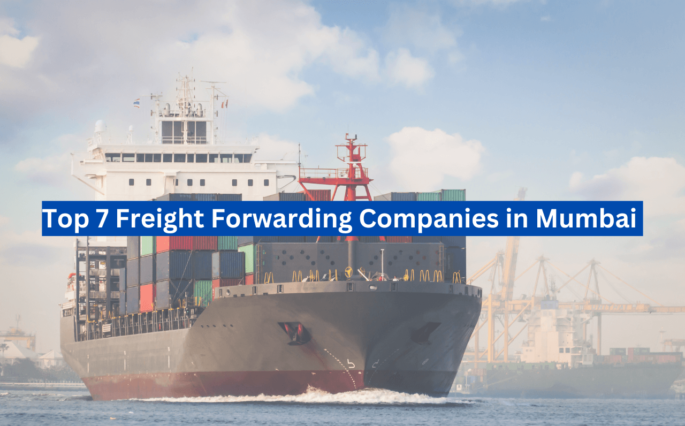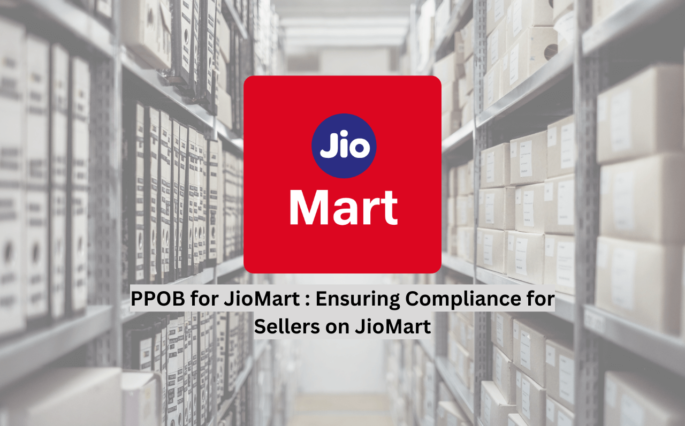Blogs
![The Advantages of Multi Vendor Marketplace Platforms for Buyers and Vendors [2025]](https://wareiq.com/wp-content/uploads/2024/10/Advantages-of-Multi-Vendor-Marketplace-Platforms.png)
The Advantages of Multi Vendor Marketplace Platforms for Buyers and Vendors [2025]
The e-commerce landscape is evolving rapidly, with multi vendor marketplace platforms gaining significant traction. According to recent studies, marketplaces will account for nearly 40% of global online retail sales by 2025, showcasing their growing influence in the digital economy. This shift is not merely a trend; it reflects a fundamental change in how consumers shop, and businesses operate. As buyers increasingly seek convenience and variety, vendors seek cost-effective ways to reach larger audiences without the burdens of traditional retail. In this article, we will explore the advantages of multi vendor marketplace platforms for buyers and vendors. By understanding these benefits, businesses can make informed decisions about leveraging these platforms to enhance their operations and customer experiences. What Is a Multi-Vendor Marketplace Platform? A multi-vendor marketplace platform is an e-commerce solution that allows multiple independent sellers to offer their products or services through a single online storefront. This model provides a centralised system for managing vendors, processing payments, and handling logistics. Popular examples include Amazon, eBay, and Etsy, which have successfully created ecosystems where buyers can access diverse products from various sellers. Advantages of Multi Vendor Marketplace Platforms for Buyers Diverse Product Offerings One of the primary advantages of marketplace platforms is the vast selection of products available. Buyers can browse various items from different vendors in one location, making it easier to find what they need. This variety enhances the shopping experience and increases the chances of purchasing. Competitive Pricing With multiple vendors selling similar products, competition naturally drives prices down. Buyers benefit from this competitive environment as they can compare prices and find the best deals without visiting multiple websites. Convenience and User Experience Multi-vendor marketplaces streamline the shopping process by allowing customers to add products from various sellers into a single cart. This seamless experience saves time and effort, making online shopping more convenient for consumers. Multi-Vendor Marketplace Platform’s Advantages for Vendors Lower Operational Costs For vendors, one of the most significant advantages of multi-vendor platforms is the reduced financial burden associated with inventory management and logistics. Vendors can focus on their core business activities while the marketplace handles order processing and customer service. Increased Market Reach Joining a multi-vendor marketplace allows sellers to tap into an existing customer base they may not have reached independently. This broader exposure can lead to increased sales opportunities and brand recognition. Scalability and Flexibility Multi-vendor marketplaces provide vendors with the flexibility to scale their operations quickly. Vendors can easily add new products as demand grows without worrying about inventory constraints or additional overhead costs. Operational Efficiency in Multi-Vendor Marketplaces Centralised Management System Multi-vendor platforms offer a centralised management system that simplifies order management, payment processing, and vendor communication. This efficiency enables vendors to concentrate on growing their businesses rather than dealing with administrative tasks. Logistics Support Logistics can often be a significant challenge in e-commerce. However, multi-vendor marketplaces typically provide integrated logistics solutions that help ensure timely deliveries and efficient inventory management across different sellers. Enhanced Customer Trust and Satisfaction Quality Control Mechanisms Many multi-vendor marketplaces implement quality control measures such as seller ratings and reviews to maintain a positive reputation. These systems help buyers make informed decisions while encouraging vendors to maintain high standards for their products. Customer Service Support Customer service is crucial in e-commerce, especially when dealing with multiple vendors. Multi-vendor marketplaces usually have dedicated support teams that handle customer inquiries related to payments, refunds, returns, or replacements, ensuring a smooth experience for buyers. Data Insights and Analytics Access to Valuable Market Data Through analytics tools, multi-vendor platforms provide valuable insights into customer behaviour and market trends. Vendors can leverage this data to optimise their product offerings, adjust pricing strategies, and improve marketing efforts. Performance Tracking Vendors can track their sales performance using built-in analytics features offered by multi-vendor marketplaces. This capability enables them to identify successful products and areas needing improvement. Also read: Key Features of Seller Panel for a Multi-Vendor Marketplace How WareIQ Enhances Multi-Vendor Marketplace Platforms? In the competitive e-commerce landscape, leveraging technology is crucial for the success of multi-vendor marketplace platforms. WareIQ offers a comprehensive solution designed to streamline operations and enhance the experience for both sellers and buyers. Here’s how WareIQ Multi vendor platform can significantly contribute to the efficiency and effectiveness of multi-vendor marketplaces. Unified Seller Panel One of the standout features of WareIQ is its unified seller panel, which provides vendors with a single interface to manage their operations across multiple marketplaces. This centralised system allows sellers to: Manage Inventory Efficiently: Vendors can track inventory levels in real-time, ensuring that stock is accurately reflected across all platforms. This reduces the risk of overselling and enhances customer satisfaction by preventing stockouts. Streamline Order Fulfilment: WareIQ integrates with various logistics partners, allowing sellers to automate order fulfilment processes. This capability speeds up delivery times and simplifies vendors' logistics management. Advanced Analytics and Insights WareIQ equips vendors with powerful analytics tools that provide valuable insights into sales performance and customer behaviour. These analytics enable sellers to: Optimise Product Offerings: By analysing sales data, vendors can identify trends and decide which products to promote or discontinue. This data-driven approach helps maximise profitability. Enhance Marketing Strategies: Understanding customer preferences allows vendors to tailor their marketing efforts, ensuring that promotions are targeted effectively to drive sales. Seamless Integration with Marketplaces WareIQ is designed to integrate seamlessly with various popular marketplaces, such as Amazon, eBay, and Shopify. This integration offers several advantages: Simplified Onboarding: New vendors can quickly set up their accounts and start selling without navigating complex processes across different platforms. Consistent Branding: By maintaining a unified presence across multiple channels, vendors can strengthen their brand identity and improve recognition among consumers. Customer Support and Training WareIQ recognises that transitioning to a multi-vendor marketplace can be challenging for some sellers. Therefore, they offer robust customer support and training resources: Dedicated Support Teams: Vendors have access to expert support teams that can assist with any technical issues or questions regarding the platform. Training Resources: Comprehensive training materials help sellers understand how to utilise the platform effectively, ensuring they can maximise its features for their business growth. Incorporating WareIQ into a multi-vendor marketplace platform can significantly enhance operational efficiency and seller satisfaction. WareIQ empowers vendors to thrive in the competitive e-commerce environment. By leveraging these tools, businesses can focus on growth while providing an exceptional shopping experience for customers. You may also like to read: WareIQ’s MultiVendor Central: A Unified Seller Panel for Marketplaces Conclusion In summary, the advantages of multi-vendor Marketplace Platforms are substantial for both buyers and vendors. Buyers enjoy diverse product offerings, competitive pricing, and enhanced convenience, while vendors benefit from lower operational costs, increased market reach, and scalability. As e-commerce continues to evolve, embracing multi-vendor marketplaces will be essential for businesses looking to thrive in this competitive landscape. By understanding these advantages, stakeholders can make informed decisions about leveraging multi-vendor platforms to enhance their operations and improve customer experiences. You may also like to read: Best Multi Vendor Ecommerce Platforms Globally FAQs about Multi-Vendor Marketplace Platforms What is a multi-vendor marketplace platform?A multi-vendor marketplace platform is an e-commerce solution that enables multiple independent sellers to create their storefronts within a single online marketplace. This setup allows vendors to list their products or services, manage inventory, and handle orders while the platform facilitates payment processing and logistics. This model provides a centralised system for buyers and sellers, enhancing the overall shopping experience.How do multi-vendor marketplaces work?Multi-vendor marketplaces operate by allowing vendors to register and create accounts on the platform. Once registered, sellers can upload their products, set prices, and manage their inventory. When customers make purchases, the marketplace processes payments and distributes funds to the respective vendors after deducting any applicable fees. This streamlined process simplifies operations for both sellers and buyers, making it easier to conduct transactions.What are the advantages of multi-vendor marketplace platforms for vendors?The advantages of multi-vendor platforms for sellers include:Lower operational costs: Vendors do not need to manage inventory or logistics directly.Increased market reach: They can access a larger customer base without extensive marketing efforts.Scalability: Vendors can easily expand their product offerings as demand grows.Centralised management: Platforms provide tools for order management, analytics, and customer support, allowing vendors to focus on sales.How can WareIQ help enhance multi-vendor marketplace platforms?WareIQ offers a unified seller panel that streamlines vendor operations in multi-vendor marketplaces. With real-time inventory management, automated order fulfilment, and advanced analytics, WareIQ empowers sellers to optimise their operations efficiently. Its seamless integration with various marketplaces simplifies onboarding and enhances the overall user experience.What should I consider when choosing a multi-vendor marketplace platform?When selecting a multi-vendor marketplace, consider the following factors:Ease of use: Ensure the platform has a user-friendly interface for buyers and sellers.Scalability: Choose a solution that can grow with your business needs.Commission structure: Understand how fees are structured for vendors.Integration capabilities: Look for platforms that can integrate with other tools you may need, such as CRM or ERP systems.Customer support: Ensure the platform provides robust support resources for troubleshooting and guidance.
October 25, 2024



